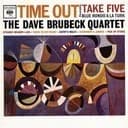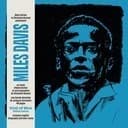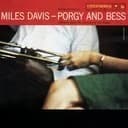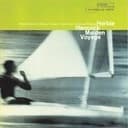scale
G♭ Bebop Major
The G♭ Bebop Major Scale is an eight-note jazz scale that extends the traditional G♭ Major scale with a chromatic passing tone between the fifth and sixth degrees. This augmented fifth (D natural) creates the characteristic bebop sound, allowing jazz musicians to emphasize chord tones on strong beats while maintaining smooth melodic lines through chord progressions.
Understanding G♭ Bebop Major
Built from G♭, A♭, B♭, B (C♭), D♭, D, E♭, and F, this scale adds a chromatic passing tone (D natural) between the perfect fifth (D♭) and major sixth (E♭). This strategic addition transforms the seven-note major scale into an octatonic structure perfectly suited for improvisation over major and dominant seventh chords. The enharmonic equivalent F♯ Bebop Major appears more frequently in sharp keys, though both scales sound identical.
The bebop major scale emerged during the 1940s bebop revolution when jazz pioneers like Charlie Parker, Dizzy Gillespie, and Bud Powell developed new approaches to improvisation. The added chromatic tone solved a rhythmic challenge: it allowed improvisers to land chord tones on downbeats while playing continuous eighth notes, creating more coherent and harmonically strong melodic lines over fast tempos.
Scale Construction and Theory
The G♭ Bebop Major scale follows the interval pattern: whole step, whole step, half step, whole step, half step, half step, whole step, half step (2-2-1-2-1-1-2-1). This formula distinguishes it from the standard major scale by inserting that crucial chromatic passing tone. The intervals from the root are: root, major 2nd, major 3rd, perfect 4th, perfect 5th, augmented 5th, major 6th, major 7th, and octave.
When practicing this scale, focus on maintaining even tone quality across all eight notes. The chromatic passing tone should flow naturally rather than sound like an accidental note. Many jazz educators recommend practicing the scale in different rhythmic groupings and starting from different scale degrees to internalize its unique sound and develop fluency across the entire range of your instrument.
Practical Applications in Jazz
Use the G♭ Bebop Major scale when improvising over G♭ major seventh, G♭ major sixth, or G♭ dominant seventh chords. It works particularly well in ii-V-I progressions where G♭ functions as the I chord, and during major blues progressions in G♭. The scale creates smooth voice leading through chord changes while maintaining the bright, major tonality essential to many jazz standards.
Advanced players often combine the G♭ Bebop Major with other bebop scales and melodic minor modes to create sophisticated improvisational lines. The chromatic passing tone can be emphasized or de-emphasized depending on musical context, and many improvisers use it specifically to create tension and resolution during longer phrases. Experimenting with different articulations and rhythmic placements of the chromatic note reveals the scale's full expressive potential.
Learning and Mastery Tips
Begin by mastering the G♭ Major scale, then gradually introduce the chromatic passing tone. Practice playing ascending and descending patterns, ensuring the D natural flows smoothly between D♭ and E♭. Work through common jazz progressions in G♭, consciously applying the bebop major scale to hear how it enhances your melodic lines and creates more musical improvisations.
Record yourself improvising with backing tracks in G♭ to develop your ear for when and how to use the chromatic passing tone effectively. Listen to classic bebop recordings to hear master musicians applying this scale concept. Notice how the added chromatic note creates forward motion and helps outline chord changes while maintaining rhythmic momentum through fast-tempo tunes.
- Symbol
- G♭ bebop
- Key
- g flat
- Scale Type
- bebop major
- Cardinality
- octatonic
- Number of Notes
- 9
- Notes
- G♭, A♭, B♭, B, D♭, D, E♭, F, G♭
- Intervals from Root
- M2, M3, P4, P5, m6, M6, M7





